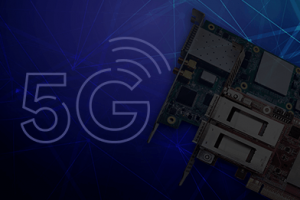With this Blog, VVDN throws light on performance-related issues with current software OvS in datacenters & gives a glimpse into how it can be improved by hardware offloading. With the current appetite for higher bandwidth and transfer rates, revamping or adoption of revised datacenter functioning is no more an option. It is critical for Datacenters to empower themselves and properly service the traffic at line rate, with the quality end-user experience.
Table of Contents
Evaluating Virtual Switching & Performance Challenges
Modern virtualization techniques have revolutionized the datacenters through the development and deployment of advanced network functions such as virtual switching. Open vSwitch (OvS) is a widely-deployed example of an SDN-controlled virtual switch in datacenters.
OvS DPDK is the industry solution for achieving higher performance in software OvS. However, a few major issues exist:
- Though it has improved performance, it is practically much less than the line rates and not enough to meet future customer demands.
- OvS DPDK is CPU hungry. CPU cores when dedicated to each Receive and Transmit Queue, give a maximum performance which leads to eating up a lot of CPU cores. If we allocate a significant number of CPU cores for DPDK, fewer cores will be available to run revenue-generating services, drastically affecting the revenue.
- The performance is dependent on the number of flows. When we scale up the number of flows the performance dips considerably.
All these add to major challenges to meet the high-performance demand in the current scenario and thus industries are looking out for alternate schemes which can enhance the switching performance.
VVDN’s FPGA based offloading Solution
Industries are looking forward to hardware offloading of switching functions, as it shows better results than software in terms of performance. Smart NICs are the hardware platforms that are specifically developed to accelerate network functions and are generally ASIC, CPU or FPGA based. At VVDN we are currently focused on FPGA based smart switching as the best suited solution. Our solution based on FPGA – Smart OvS, with its hardware programmability, scalability, and performance at hardware speeds, can cater to the evolving hardware offload needs of the Data Centers and can be future proof. The solution is currently developed for Alveo U200, U280 and U25 cards from Xilinx Inc.
OvS Hardware Offloading Benefit Illustration
From the data traffic perspective, a simplified representation of a Data Center server consists of three sections – Network Switch, Virtual Switch and the VNFs. The VNFs run the revenue generating services and Datacenters try to maximize the revenue from a server by running more VNFs per server. The switch redirects the traffic between the NIC card and the VNFs and between the VNFs too. The switch which is the aggregation point between all VNFs and the external packet form the most common bottleneck.

Consider a twenty-four core server compute node with twenty VMs consuming 1 MPPS each, four cores dedicated to OvS for a performance of 4 MPPS and a NIC card that can handle 60 MPPS (40 Gbps). Obviously, the 4 MPPS software switch implementation forms the bottleneck. The VMs in total need 20 MPPS and are starved by the low performing vSwitch. Only four VMs can run at 1 MPPS which means there is just 17% core utilization. If we allocate 12 cores to the vSwitch the throughput can increase to 23 MPPS. But now only 12 cores will be available for VMs to run revenue generating software. Core wastage would be 50%.

However, when offloaded to hardware, OvS needs just one core to do the job. The rest of the cores are available to run revenue-generating VMs. The switch no more is the bottleneck as it can run at line rate and it switches all the packets as needed by the VMs. Since only one core is being used for OvS, all the remaining 23 cores can be used by the VMs. The server utilization for revenue-generating services increases to 96%. This clearly results from the performance enhancement achieved by offloading the switching functionality.

While VVDN with this blog has given a quick look on basics of FPGA based OvS solution to overcome the performance challenges, the next part will feature detailed info on VVDN Smart OvS and how it is a future proof solution in the market.
For more information, please reach us at info@vvdntech.com
























